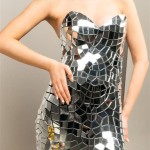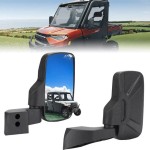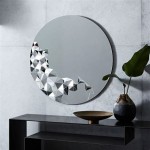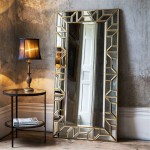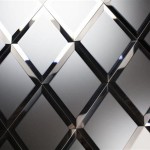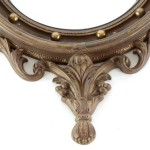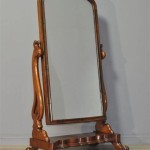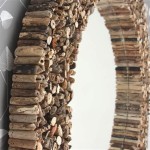What Kind of Mirrors and Lenses Are Used in Flashlights?
Flashlights, essential tools for various applications, rely on a combination of components to produce a focused beam of light. Mirrors and lenses play a crucial role in shaping and directing the light emitted from the light source. Understanding the types of mirrors and lenses employed in flashlights provides insight into how these devices achieve varying beam patterns and intensities.
Parabolic Reflectors
The most common type of mirror used in flashlights is the parabolic reflector. A parabola is a specific mathematical curve, and a mirror shaped like a parabola possesses the unique property of reflecting all incoming parallel rays of light to a single point called the focus. Conversely, when a light source is placed at the focus of a parabolic reflector, the emitted light rays are collimated into a parallel beam, creating a concentrated, long-throwing beam ideal for spotlighting.
Spherical Reflectors
While less common than parabolic reflectors, spherical reflectors are sometimes utilized in flashlights. These reflectors are a portion of a sphere, and while they do not focus light to a single point as precisely as parabolic reflectors, they offer a good balance between beam focus and flood. Spherical reflectors tend to create a beam with a wider hotspot and a more gradual transition to the spill, making them suitable for general-purpose illumination.
Smooth vs. Textured Reflectors
The surface texture of the reflector also influences the beam characteristics. Smooth reflectors produce a more intense, focused beam with a clearly defined hotspot and spill. Textured reflectors, often referred to as "orange peel" reflectors, scatter the light more, creating a smoother beam profile with a less defined hotspot. This type of reflector is preferred for applications requiring a more diffused, even illumination.
Plano-Convex Lenses
Plano-convex lenses are the most frequently used lens type in flashlights. These lenses have one flat surface (plano) and one outward-curving surface (convex). When placed in front of a light source, a plano-convex lens converges the light rays, effectively focusing the beam. The degree of curvature determines the focal length of the lens and, consequently, the beam's spot size and throw distance. A shorter focal length results in a wider beam, while a longer focal length produces a narrower, more concentrated beam.
Aspherical Lenses
Aspherical lenses, as their name suggests, deviate from a perfectly spherical shape. This complex curvature allows aspherical lenses to correct spherical aberrations, a type of optical distortion that occurs with spherical lenses. By minimizing spherical aberrations, aspherical lenses produce a sharper, more defined beam with improved light transmission and reduced spill. They are often employed in high-performance flashlights where optimal beam quality is paramount.
Fresnel Lenses
Fresnel lenses are a special type of lens characterized by concentric grooves etched onto its surface. These grooves act like individual refracting elements, bending the light rays towards the center. Fresnel lenses are particularly effective at collimating light from large sources, making them useful in certain flashlight designs. While not as common as plano-convex or aspherical lenses, Fresnel lenses can offer a lightweight and cost-effective solution for specific applications.
Combination of Reflectors and Lenses
Many flashlights utilize a combination of reflectors and lenses to achieve the desired beam characteristics. The reflector gathers and collimates the light from the source, while the lens further refines the beam, focusing it to a specific spot size and controlling the spill. This combination allows for greater control over the final beam pattern and intensity.
Materials Used
The materials used for reflectors and lenses also play a significant role in flashlight performance. Reflectors are often made from aluminum or other metals, which are then polished or coated to enhance reflectivity. Lenses are typically made from glass or plastic, with each material offering different properties in terms of durability, scratch resistance, and optical clarity. Higher-quality flashlights often utilize coated lenses to minimize reflections and maximize light transmission.
The selection of mirrors and lenses in a flashlight is carefully considered based on the intended application. Factors such as beam pattern, intensity, throw distance, and cost all influence the choice of components. By understanding the functions and properties of various reflectors and lenses, users can better select a flashlight that meets their specific needs.
Does A Flashlight Use Concave Mirror Or Convex Quora
Does A Flashlight Use Concave Mirror Or Convex Quora

What Is The Difference Between A Mirror And Lens Avantier Inc

Difference Between Mirror And Lens With Examples

How A Concave Mirror Is Used In Headlights And Searchlights To Throw Light At Long Distance Homework Study Com

Difference Between Mirror And Lens With Examples
Where Are Concave Mirrors Usually Used How About Convex Quora
Flashlights And Car Headlights All Have Concave Mirrors Why Would It Not Be A Good Idea To Use Convex Mirror Instead Quora
Why Do Flashlights Use Concave Mirrors Quora

10 Uses Of Convex Lenses Dewwool
